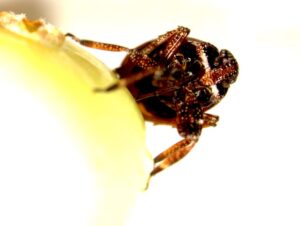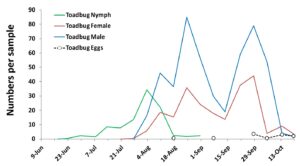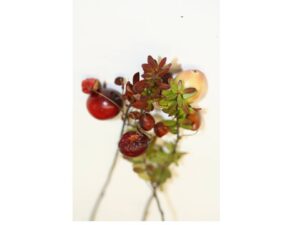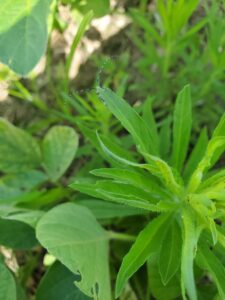Sweet Corn
European corn borer (ECB) moth catches continue to be extremely low around the state. We are in between adult generations at this time. ECB population maps will resume if second flight catches rise to high enough numbers.
The highest nightly trap catches of ECB for the week ending 07/21/21 are as follows:
| Centerton 1 |
| Milford 1 |
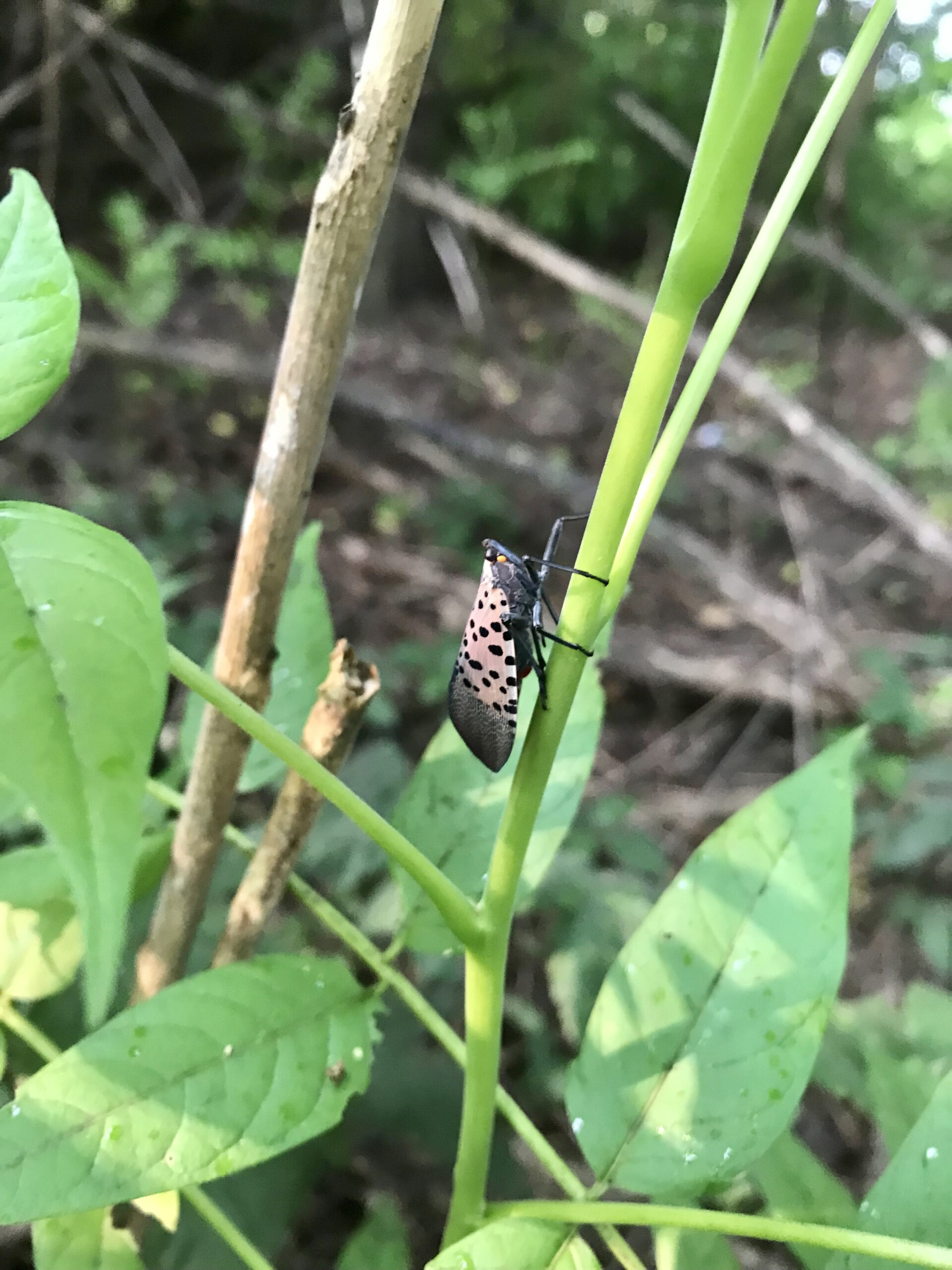 Right on time with last year’s observations, adult spotted lanternflies (SLF) were found in Pilesgrove (Salem County) NJ. In 2020 adults at the same location were found on July 23 so despite the earlier hatch observed in May, the phenology is right on track.
Right on time with last year’s observations, adult spotted lanternflies (SLF) were found in Pilesgrove (Salem County) NJ. In 2020 adults at the same location were found on July 23 so despite the earlier hatch observed in May, the phenology is right on track.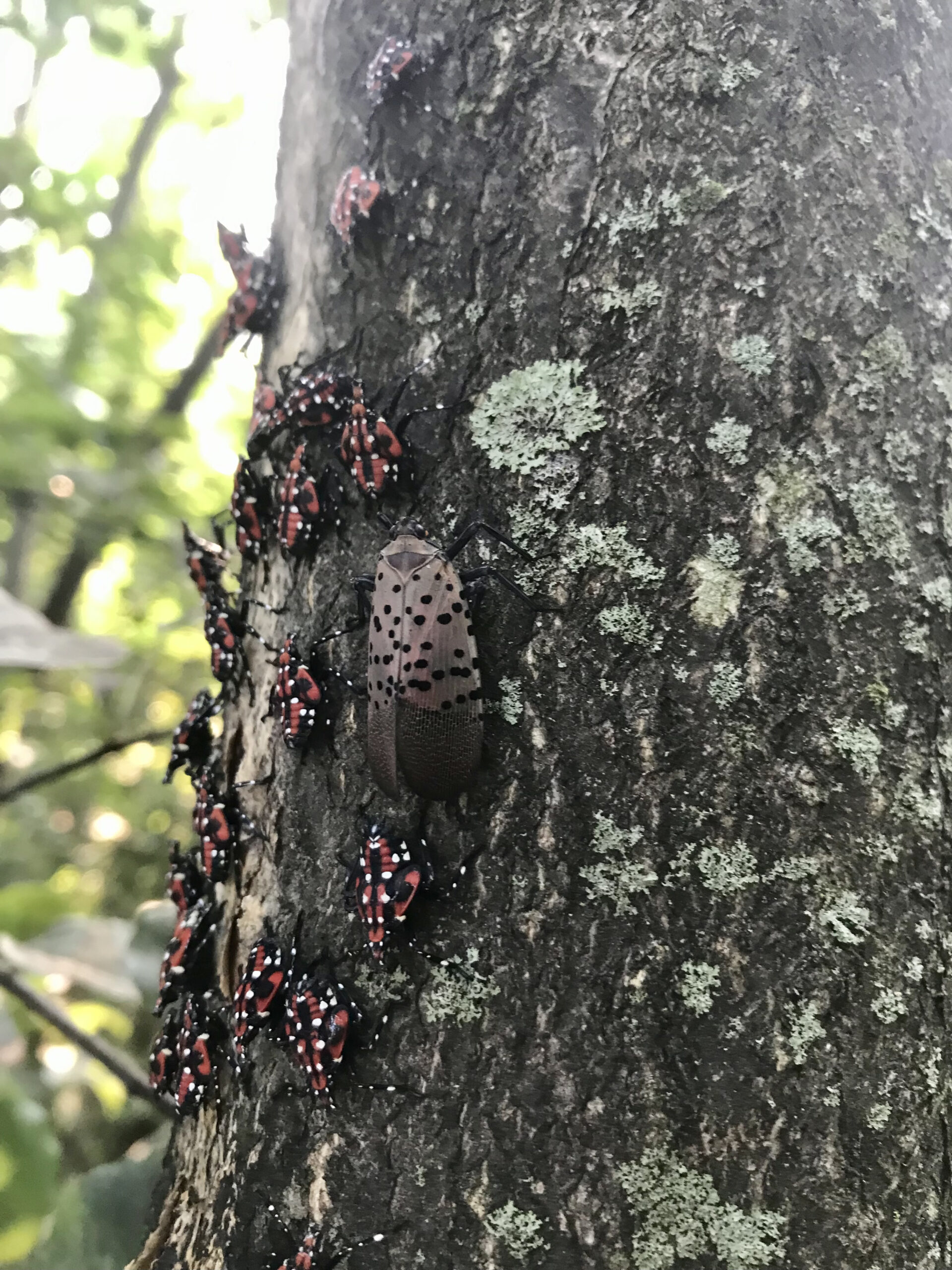 In 2020, adults dispersed in large numbers to commercial vineyards around September 4. I think this dispersal is a combination of depletion of resources (they are literally sucking the sap out of trees) and density. As NJ populations of SLF increase, they are depleting food resources faster. I expect this movement from wooded areas to vineyards will happen earlier this year, likely mid August. There will be a few bugs here and there, but commercial vineyard managers should wait to apply insecticides until you see the larger influx. Across sites, the 10 adults/vine threshold was reached around the same time last year – although some vineyards had much larger numbers per vine – so this is a good threshold to use for now. I will post management recommendations for the adults soon!
In 2020, adults dispersed in large numbers to commercial vineyards around September 4. I think this dispersal is a combination of depletion of resources (they are literally sucking the sap out of trees) and density. As NJ populations of SLF increase, they are depleting food resources faster. I expect this movement from wooded areas to vineyards will happen earlier this year, likely mid August. There will be a few bugs here and there, but commercial vineyard managers should wait to apply insecticides until you see the larger influx. Across sites, the 10 adults/vine threshold was reached around the same time last year – although some vineyards had much larger numbers per vine – so this is a good threshold to use for now. I will post management recommendations for the adults soon!